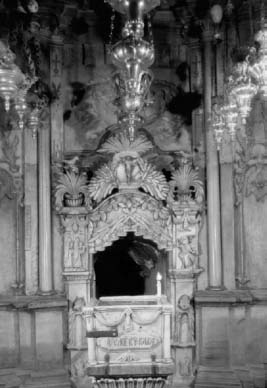ChristianityHistory and Sources |
What were the Crusades and why are they important? |
Beginning in 1096 and continuing intermittently for the next two centuries, the Crusades were wars fought over possession of the “Holy Land” and its chief sacred place, Jerusalem. Muslims had been in control of Jerusalem since around 636, but the Christian powers of central and eastern Europe mobilized only after a Turkish force vanquished a Byzantine army in eastern Asia Minor in 1071. The Byzantine emperor sought help from the pope in Rome and the first Crusade began twenty-five years later. From the Christian perspective the first was the only genuinely successful Crusade, resulting in the establishment of the Latin Kingdom of Jerusalem. An ill-fated second Crusade was launched in 1147 in hopes of expanding Christian control.
From 1099 to 1187, Crusaders held the holy city and surrounding regions. Then, under the famous hero Saladin, Muslim armies brought the Latin Kingdom down and reclaimed Jerusalem, and in the following year Christians organized the third Crusade. The English king Richard I “The Lionhearted” managed a truce with Saladin in 1192, securing little more than a token visit to the Church of the Holy Sepulcher. One of the truly grim episodes in Crusading history occurred during the fourth Crusade. Western Christian troops overthrew the Byzantine emperor, vented their wrath on their Eastern Christian cousins, and never made it to the Middle East. Four more major Crusades and several minor ones followed during the thirteenth century. Only one was a qualified success, securing control over Jerusalem for fifteen years (1229-1244). Muslim authorities retained primary custody of the holy places for nearly the next seven centuries, finally yielding to the British mandate in the early 1900s. Christian sources often glorify the Crusades as examples of heroism, but in fact those who suffered most from their consequences were the Christian communities of the Middle East.
| Date | Event |
| c. 4 B.C.E.-29 C.E. | Life of Jesus of Nazareth; ministry (26-29); Crucifixion (29) |
| c. 65 | Death of Apostle Paul |
| c. 120-220 | Age of “Apologists” and “Apostolic Fathers,” theologians; Roman persecutions |
| 3rd—4th Centuries | Beginnings of monastic communities in Egypt |
| 3rd-5th Centuries | Era of major Patristic (Church Fathers) writings in Greek, Latin, Syriac |
| 337 | Death of Emperor Constantine, who proclaimed Christianity the creed of the realm (313), thereafter largely protecting believers from persecution |
| 354-430 | Augustine of Hippo (North Africa), major Latin Father |
| 4th-8th Centuries | Major early Ecumenical Councils (Nicea, Chalcedon, Constantinople) |
| 800 | Charlemagne crowned Holy Roman Emperor, Carolingian era begins |
| 910 | Cluniac Reform of European monasticism |
| 1096-1187 | First Crusade leads to Latin Kingdom of Jerusalem |
| 12th-13th Centuries | Period of “High Scholasticism,” major theological movement, along with founding of European universities and founding of major mendicant religious orders |
| 1232 | Establishment of Inquisition |
| 1265-1321 | Life of Dante Alighieri, author of Divine Comedy |
| 1274 | Deaths of Thomas Aquinas and Bonaventure, major theologians |
| 1483-1546 | Life of Martin Luther, major Protestant Reformer |
| c. 1491-1556 | Life of Ignatius of Loyola, founder of Society of Jesus (Jesuits) |
| 1545-1563 | Council of Trent launches Catholic Reformation |
| 1869-1870 | Vatican Council I, first council in over three centuries |

Holy Sepulcher, Jerusalem, entry to tomb chamber. (Photo courtesy of David Oughton.)
